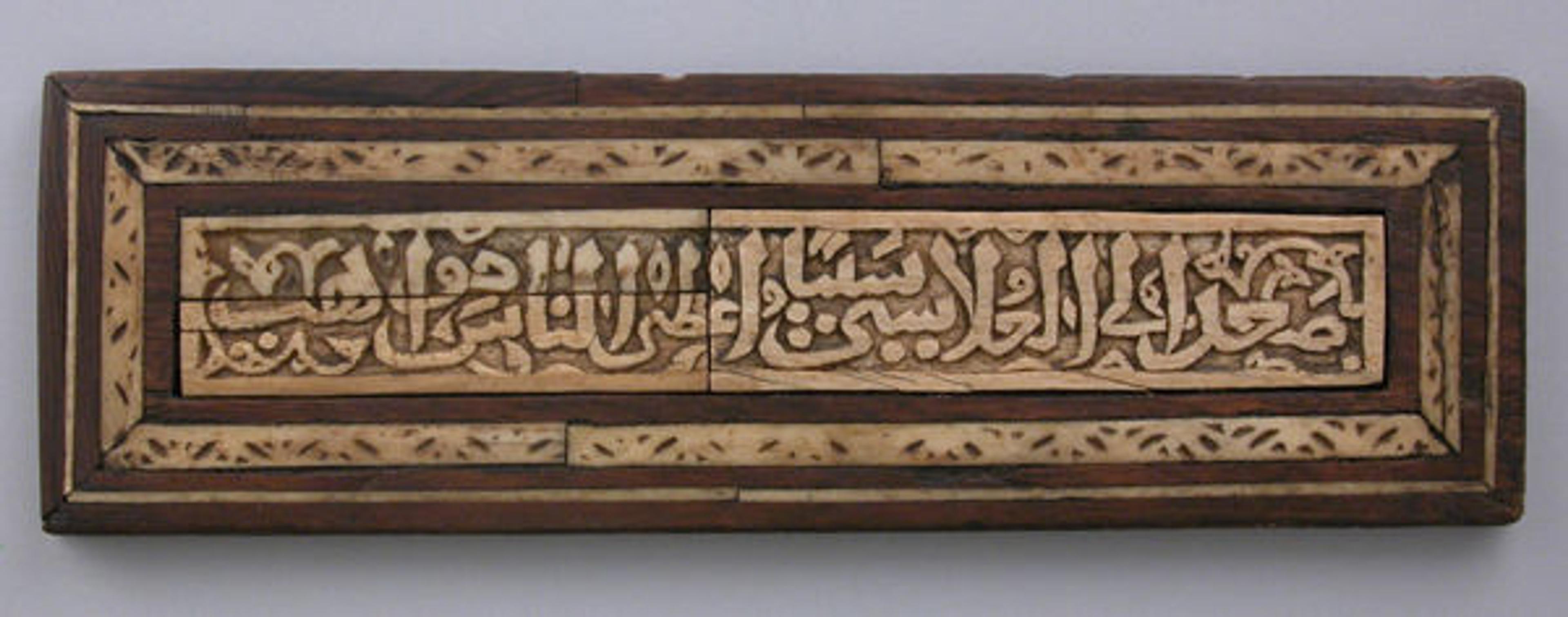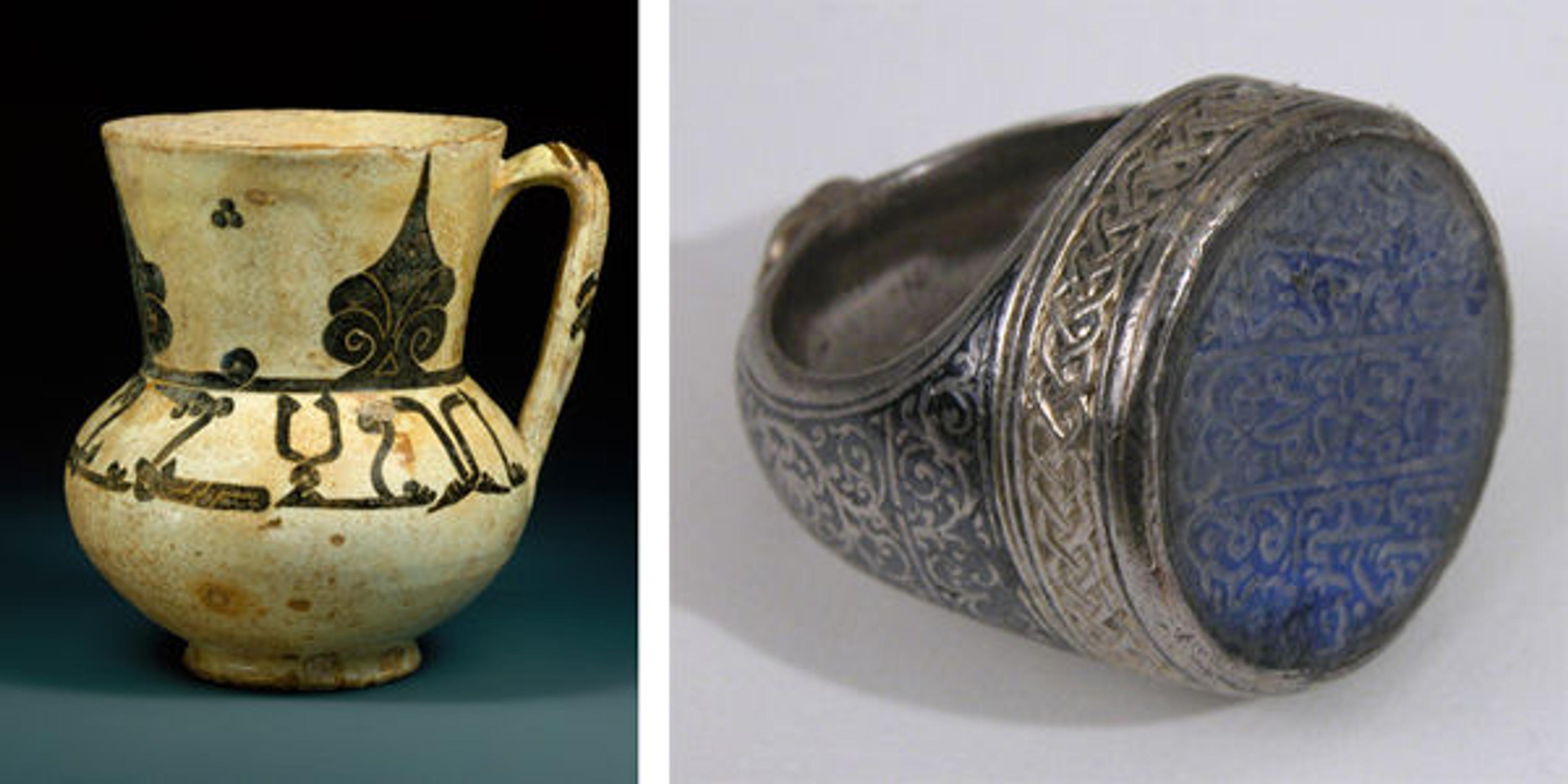Looking Closely: An Unexpected Discovery in the Islamic Collection

Panel, 14th–15th century. Egypt, Cairo. Islamic. Wood; inlaid with carved ivory. The Metropolitan Museum of Art, New York, Rogers Fund, 1907 (07.236.5)
«As a new curatorial research fellow in the Department of Islamic Art, I am becoming acquainted with many different aspects of museum life such as museum education and exhibition practices, but I spend most of my time researching our rich collection of Islamic art objects. I've recently been examining a large group of wooden panel pieces, many of which were parts of minbars (pulpits) in mosques in Egypt during the Mamluk period (1250–1517)—some of these are on display in gallery 454. In this group, I came across a rectangular panel (shown above) that is inlaid with carved ivory and bears an inscription in Arabic.»

Islamic art objects often carry inscriptions, sometimes with phrases that appear in art from all over the Islamic world, as is the case with the ewer pictured at left, and sometimes they tell us more about the maker or owner of the object, as is the case with the seal ring at right. Left: Ewer with Arabic proverb, "Devotion fortifies action," 10th century. Iran or present-day Uzbekistan, Nishapur or Samarqand. Islamic. Earthenware; white slip with black slip decoration under a transparent glaze. The Metropolitan Museum of Art, New York, Gift of Ernest Erickson Foundation, 1988 (1988.114.3). Right: Seal Ring with the name of Hajji Muhammad ibn Mahmud, probably 16th century. Central Asia or Iran. Islamic. Bezel: lapis-lazuli; carved shank: silver; worked, gilded, and with black inlay. The Metropolitan Museum of Art, New York, Bequest of W. Gedney Beatty, 1941 (41.160.280)
To find out more about the panel, I asked Dr. Abdullah Ghouchani, who helps us transcribe and translate inscriptions, if he could take a look. I was hoping, of course, that we would find specific information about the piece (maybe even the name of the craftsman!), but more realistically, I expected that the inscription would be from the Qur'an, which would be appropriate to its use as part of a mosque furnishing. Dr. Ghouchani's findings, however, revealed something unexpected: the text was religious but not Islamic. In fact, the inscription was a partial quotation from the Psalms of David (68:18): "You have ascended on high, You have led captivity captive; You have received gifts among men…" The panel may have been commissioned by the Christian community for a church, either as part of a larger object or as an architectural ornament.
It's easy, when researching very specific periods and materials, to forget the complicated history of the Islamic world. By the time of the Mamluks, the Egyptian population was mostly Muslim, but Coptic Christians were a vibrant community with deep historical ties to the country. Gallery 302, located underneath the Museum's Great Stairs, showcases the arts of Byzantine Egypt, which include earlier examples of Coptic art. Some Coptic textiles can also be seen in gallery 451, which displays objects from the Arab Lands and Iran in the Umayyad and Abbasid Periods (seventh–thirteenth centuries).
The Egyptian panel demonstrates the complex cultural environments from which objects emerge, something to which many of the Metropolitan's holdings attest. I'm going to keep an image of it on my cubicle wall to remind me that things aren't always what they seem.
Fatima Quraishi
Fatima Quraishi is the 2014–15 Hagop Kevorkian Fellow in the Department of Islamic Art.